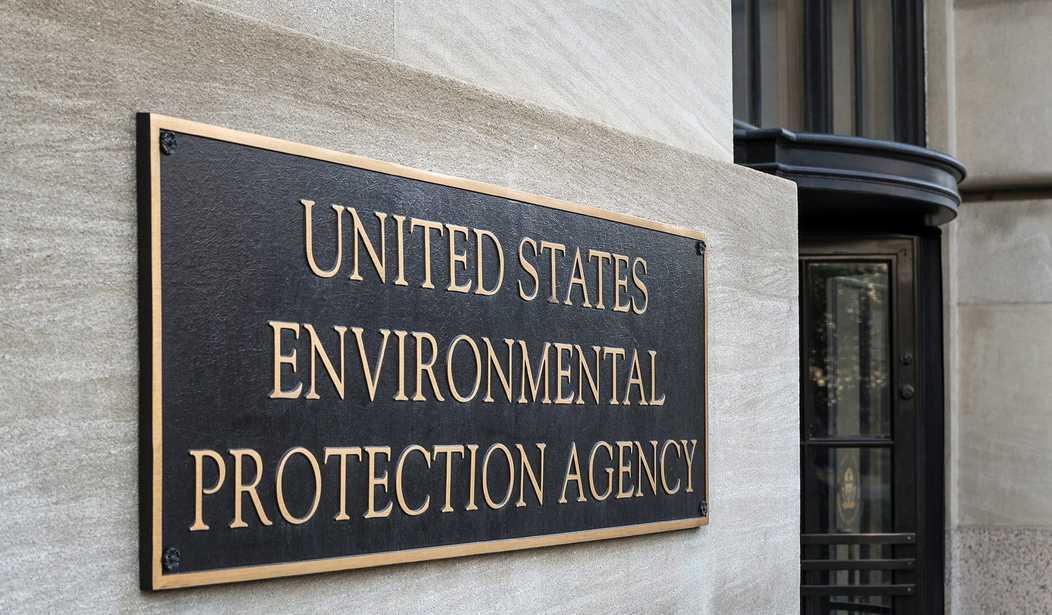Here’s a radical concept: federal agencies created and empowered by congressional statutes have to comply with those statutes — i.e., they have to obey federal law — in exercising their power.
It is a rudimentary concept, of course, but one with which the Obama administration has appeared only vaguely acquainted throughout its eight years. Now, a federal judge in West Virginia is providing remedial instruction for the Environmental Protection Agency, and in the process, is derailing the administration’s war on the coal industry.
As Powerline’s John Hinderaker explains, Judge Preston Bailey has directed the EPA to comply with a straightforward statute that unambiguously requires the agency to evaluate the effects on employment of its plans to enforce the Clean Air Act.
The case arises out of the EPA’s issuance of draconian regulations of air pollutants from coal and oil power plants. The libertarian Cato Institute recounts that the regs “provide far less than a penny in benefits for each of the nearly $10 billion in costs it imposes on the U.S. economy.” The Supreme Court, in Michigan v. EPA (2015), has already slapped the agency down due to the irrationality of this enormous-cost/negligible-benefit formula that is clearly designed to annihilate these industries. But, Cato explains, EPA is doubling down by trying to justify its $10 billion price tag with benefits outside those the statute permits it to count (which it euphemistically calls “co-benefits”).
The West Virginia case, Murray Energy Corporation v. EPA, is a successive instance of the defiant agency’s effort to ram through its regulations heedless of judicial rulings.
Murray Energy sued the EPA for, among other things, failing to comply with the statutory scheme it so oppressively enforces. In particular, the agency ignores the section of the Clean Air Act (section 7621 of Title 42, U.S. Code) that directs:
The Administrator [of EPA] shall conduct continuing evaluations of potential loss or shifts of employment which may result from the administration or enforcement of the provision of this chapter and applicable implementation plans, including where appropriate, investigating threatened plant closures or reductions in employment allegedly resulting from such administration or enforcement.
I italicize “shall” because, in the law, shall (as opposed to, say, “may” or “should”) denotes something that must be done — it is not a suggestion.
Yet, the EPA does not even deign to take notice of it. In Murray Energy, there appears to be no question that the agency ignored the statute. In ruling for the company back in October, Judge Bailey ordered the EPA, within two weeks, to file a plan and schedule for how it would comply with the provision mandating Administrator Gina McCarthy to evaluate losses or shifts of employment that would occur if the EPA’s suffocating proposal went into effect.
The EPA’s response, in essence, was, “You’re kidding, right?”
As John Hinderaker gleans, “The EPA apparently responded with a filing that said it never carries out the sort of economic assessments” dictated by the statute. With the brazen premise that a decades-long pattern of lawlessness somehow becomes a license (i.e., that the EPA’s blithe non-compliance should be treated not as an affront but as if Congress had amended the statute), Administrator McCarthy contended that the compliance order was unrealistic. The EPA is in a hurry to transform energy as we know it, you see, and it would take a couple of years to perform the analysis called for by the statute. (Of course, the EPA is also not in a hurry to provide information about how many thousands of coal and oil jobs would disappear due to its proposed policies.)
This is a classic case of progressive mission creep (actually more like “leap” than “creep”). The imperative is just to get a law on the books, whether it is the Clean Air Act, Obamacare, Dodd-Frank, or what have you. The agency responsible for enforcement then carries out its vision of what its mission should be, not the more modest mission that Congress has actually authorized — authorization set out in laws that usually pass because progressives swear up and down that their proposals are really just moderate, itsy-bitsy improvements, not a radical changes.
The agency gets away with this because it goes after one target at a time, not the entire class of businesses or individuals caught in the regulatory net. Most targets do not have the resources, time or energy for a sustained battle against administrative-state agencies with their multi-billion dollar budgets and legions of government lawyers. So, they settle with the bureaucratic bully and comply with its demands. While congressional statutes like the Clean Air Act circumscribes these agencies’ authority, they also give these agencies raw power — power the agencies press well beyond the letter of the law.
Judge Bailey has now ruled that this response is not acceptable.
As John recounts, when the federal court told the EPA to do its statutory duty by identifying coal and oil facilities at risk of closure or reductions in employment, the EPA’s position was that “analyzing job loss won’t change global energy trends.” But so what? The Clean Air Act does not make the EPA responsible for addressing global energy trends. It makes the agency responsible for addressing employment trends.
As Judge Bailey bluntly told the EPA, if the agency thinks it should have a different mission, it should urge Congress to amend the law. Unless and until Congress does so, it is not the EPA’s place to decide that the law is not good policy or that, as written, it would hard for the agency to enforce. As the judge put it, “Congress makes the law, and EPA must not only enforce the law, it most obey it.”
If the swamps are to be drained, that is the message that must be conveyed to the sprawling, arrogant administrative state.









Join the conversation as a VIP Member